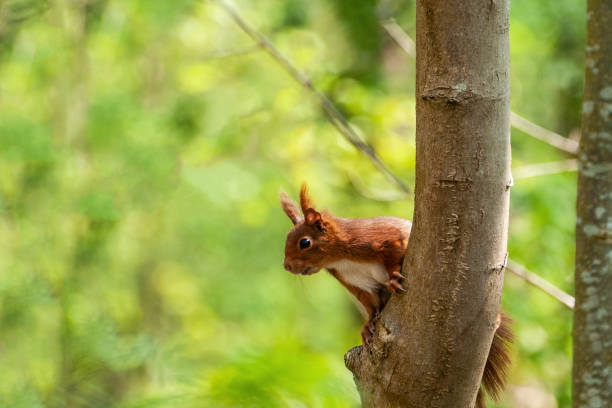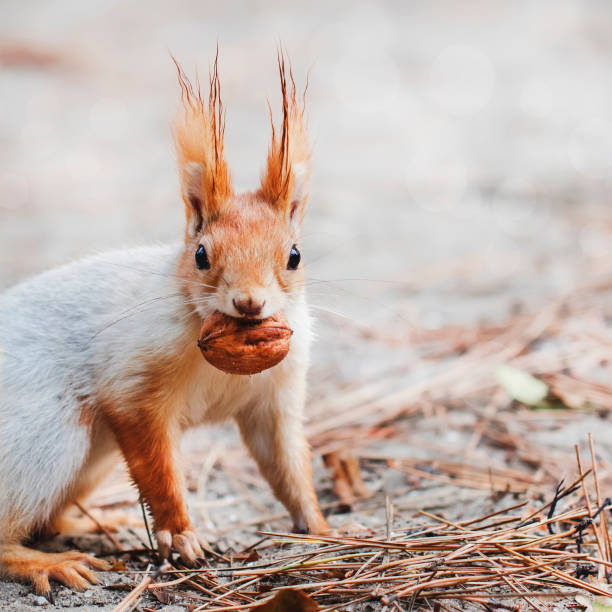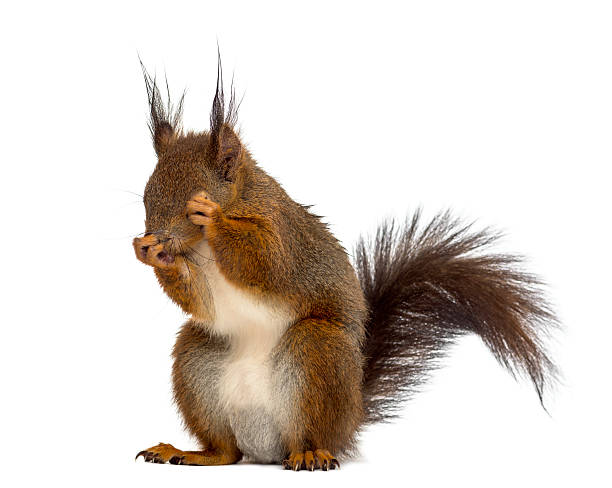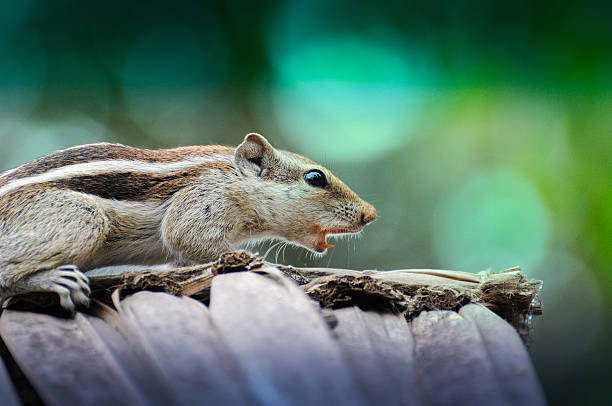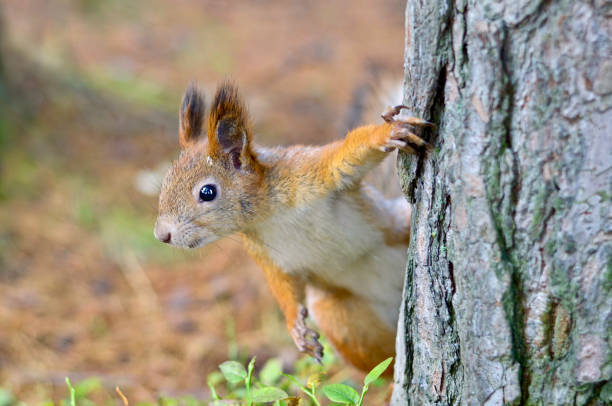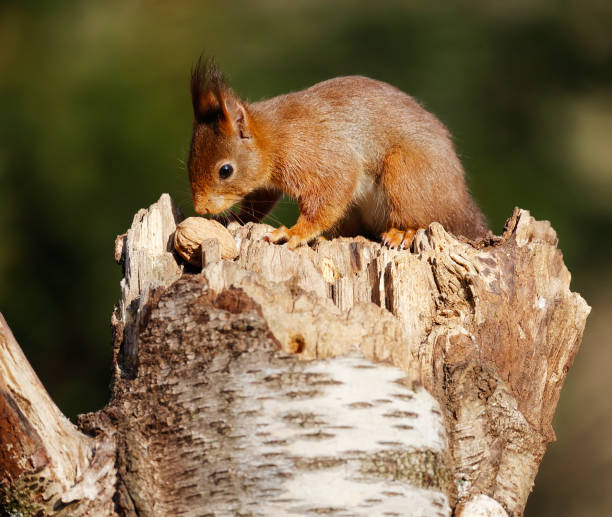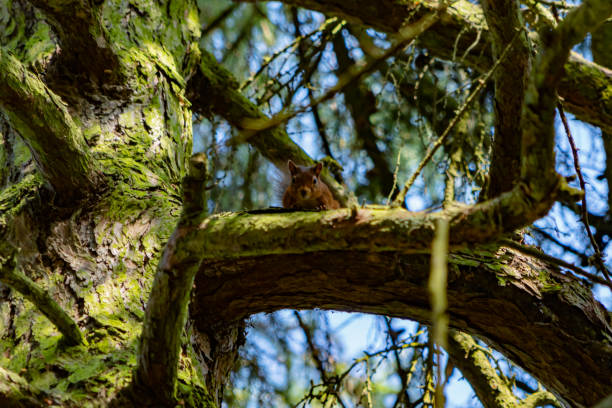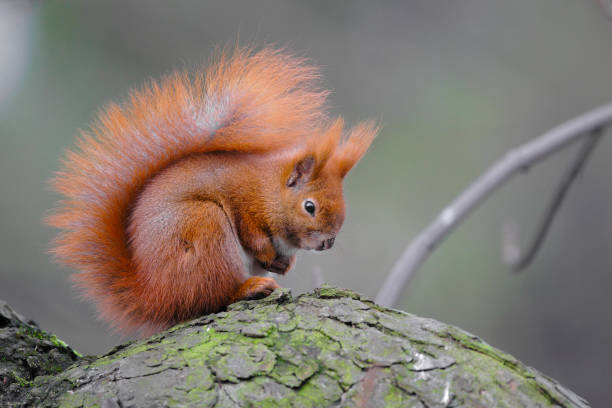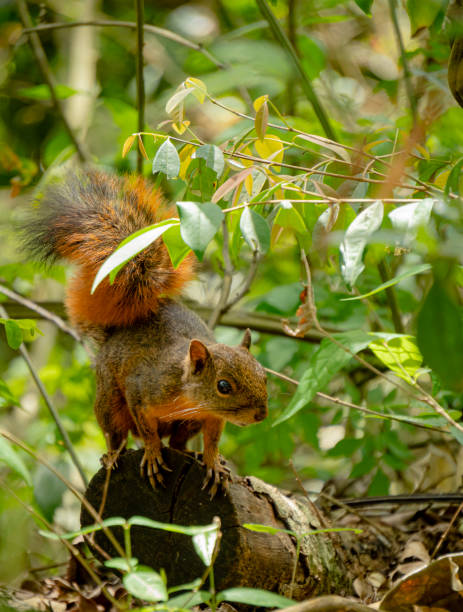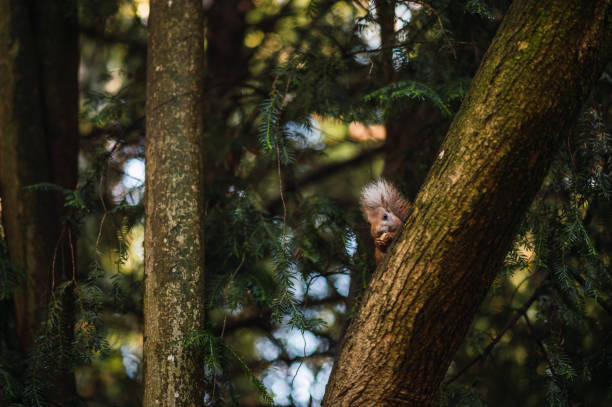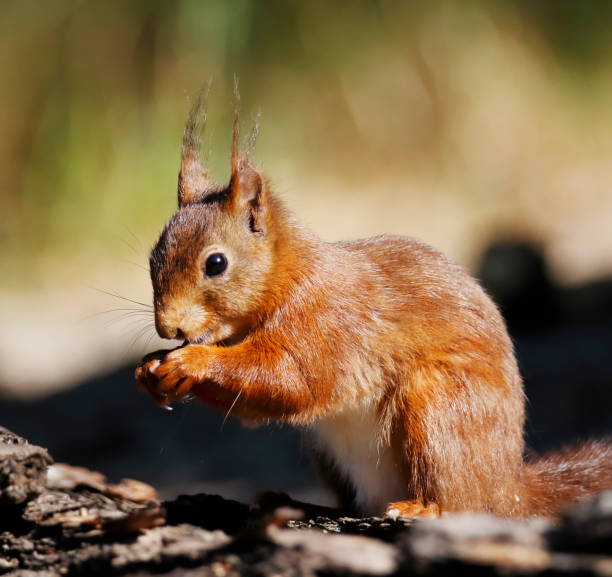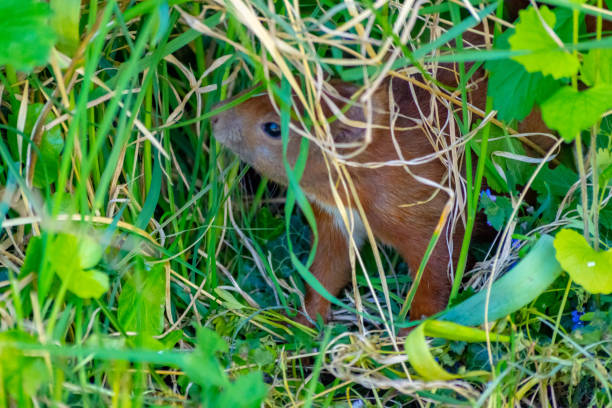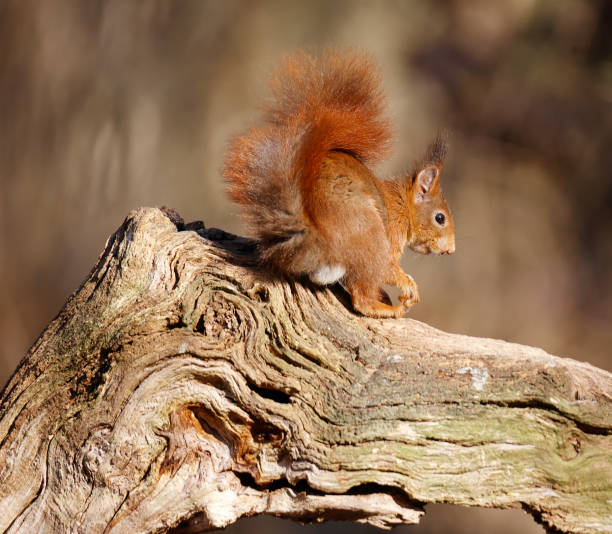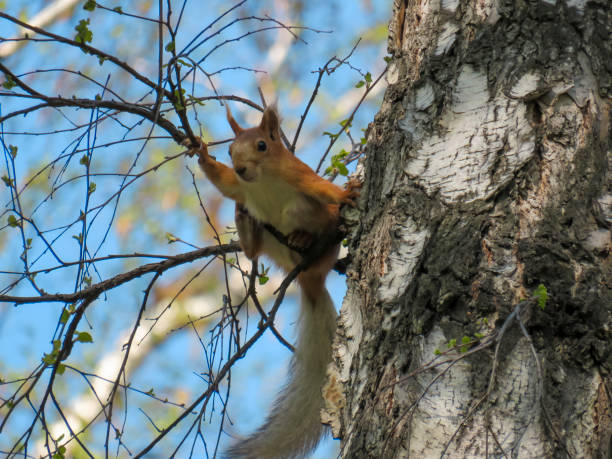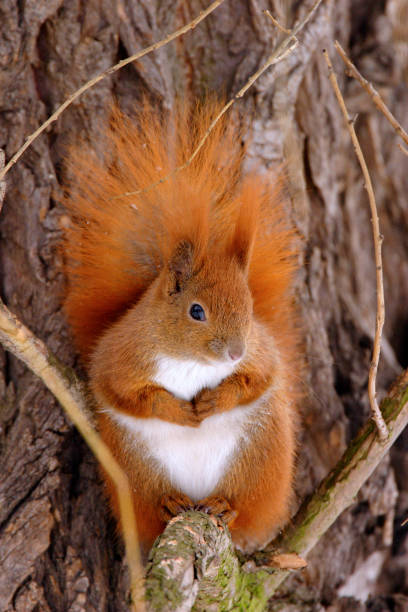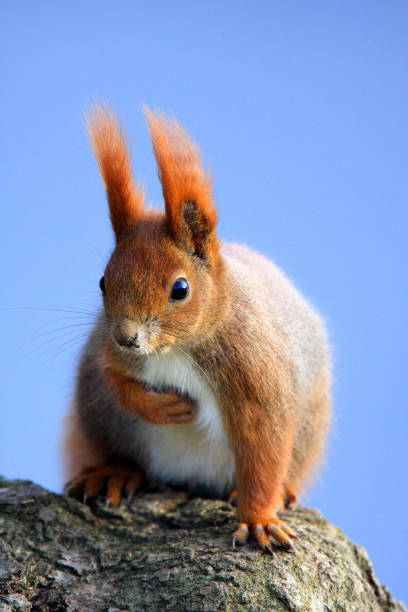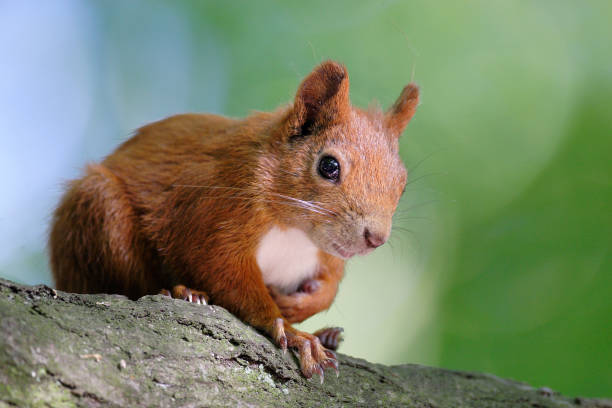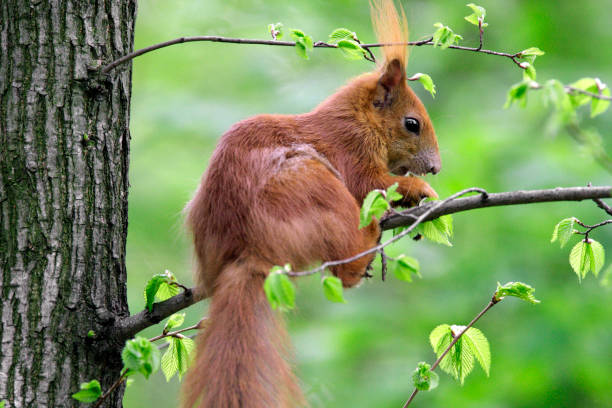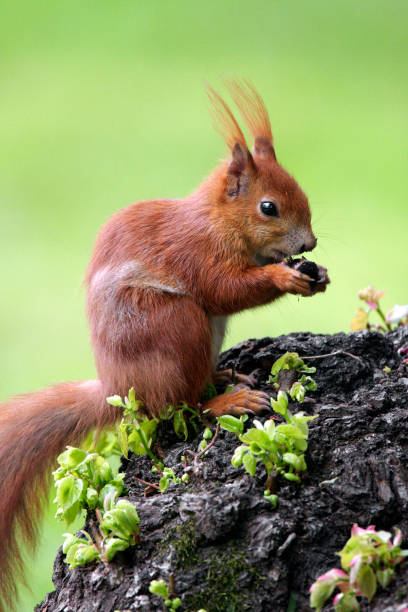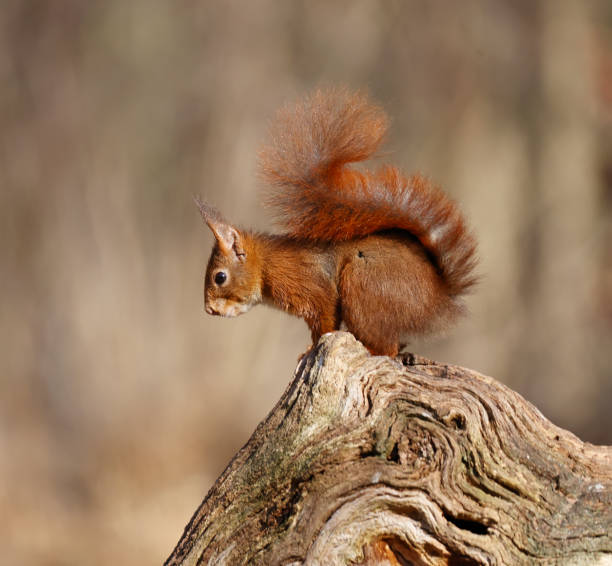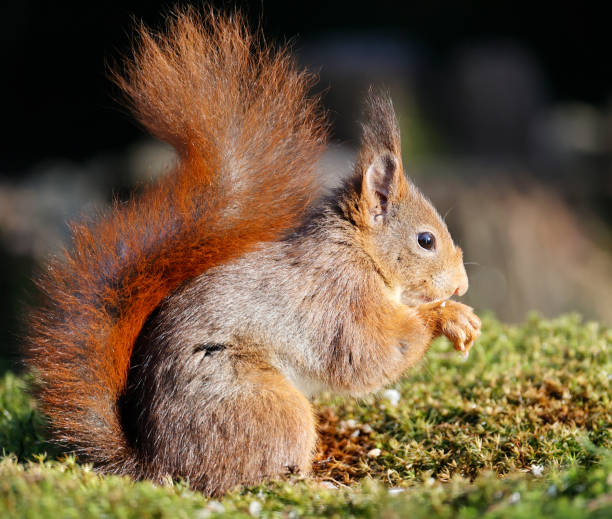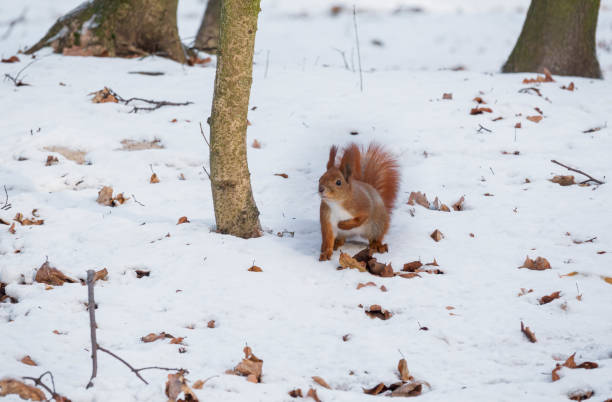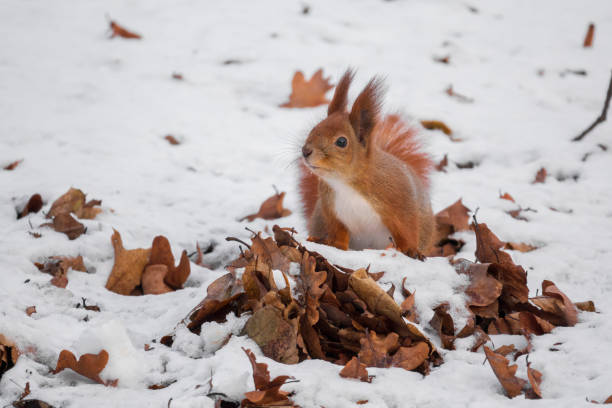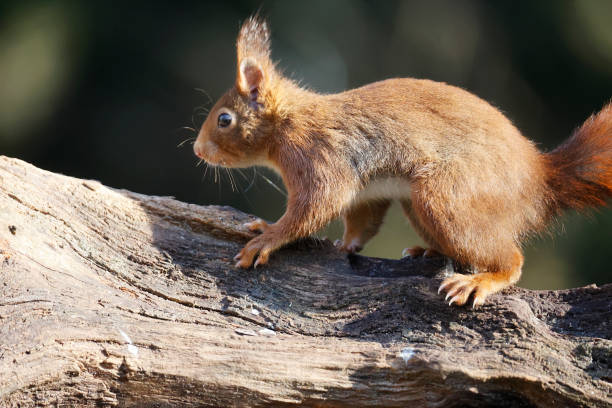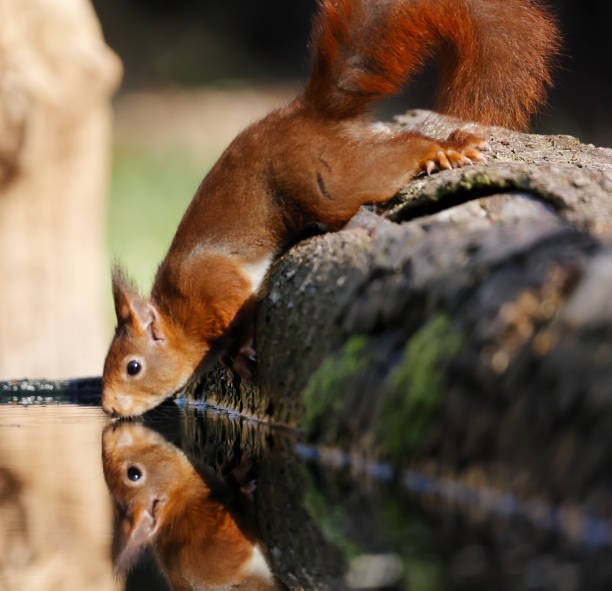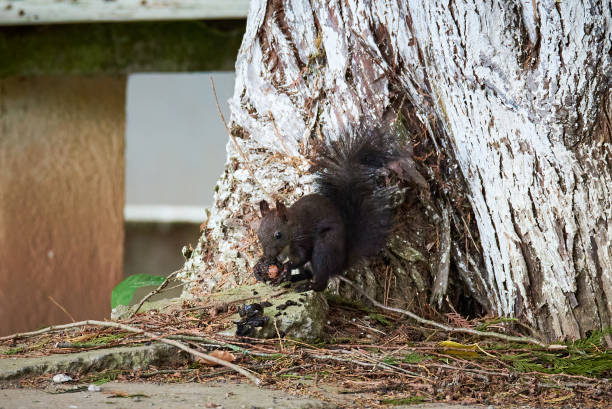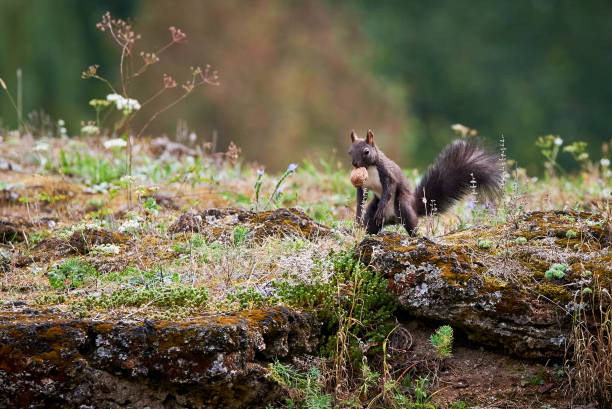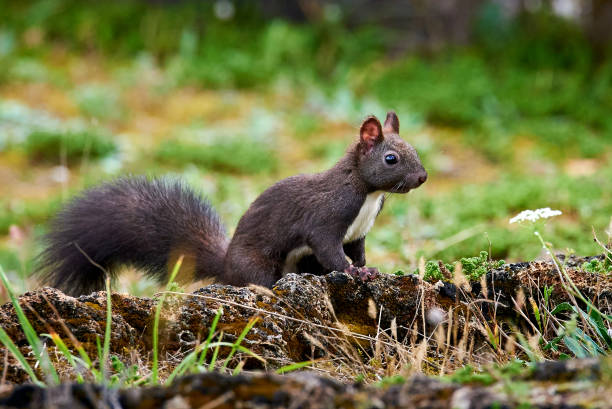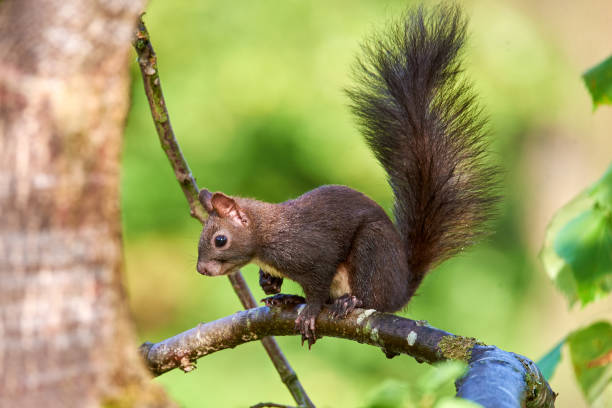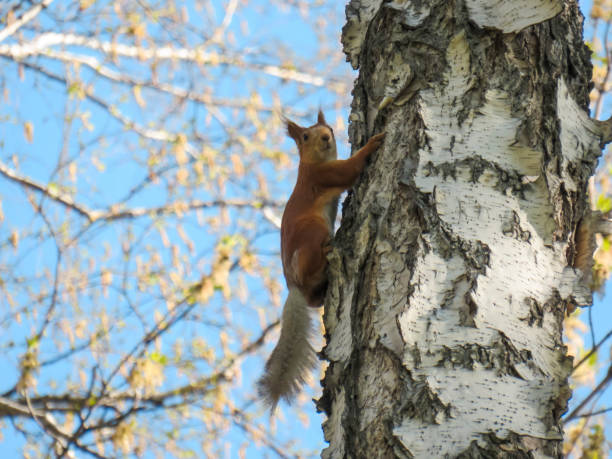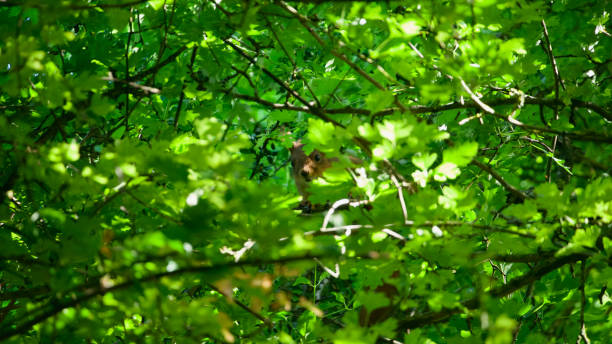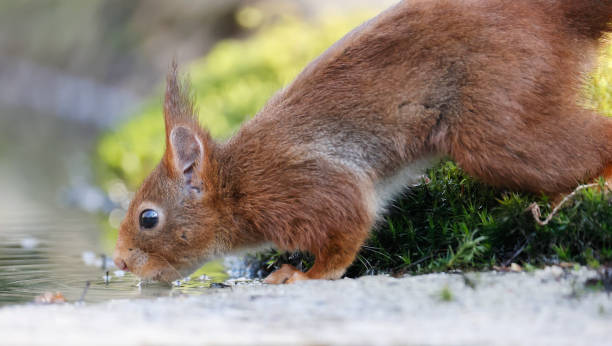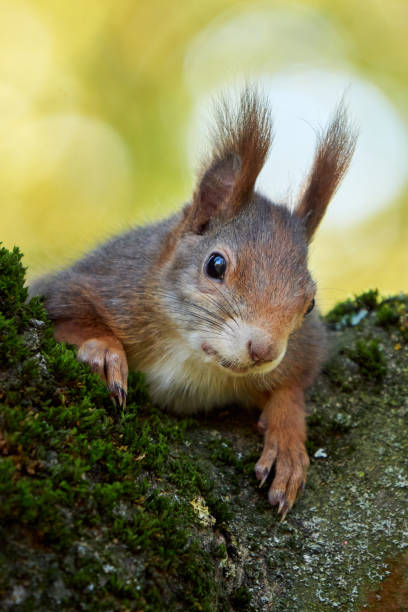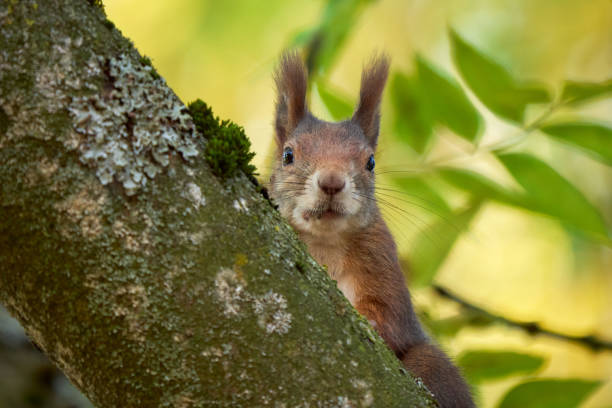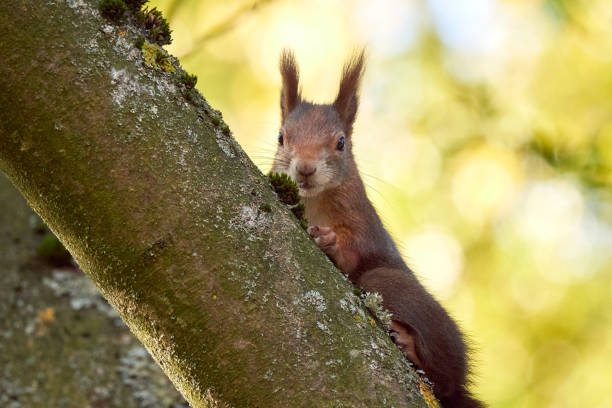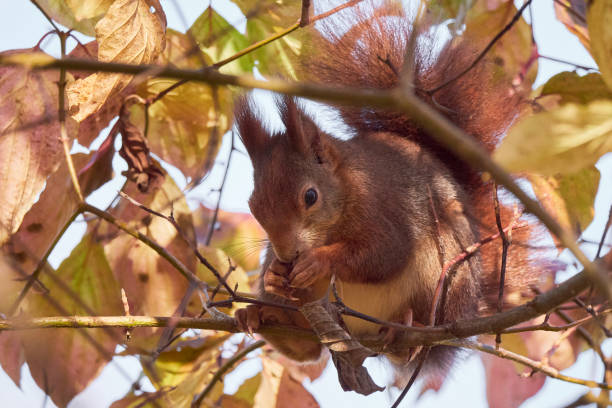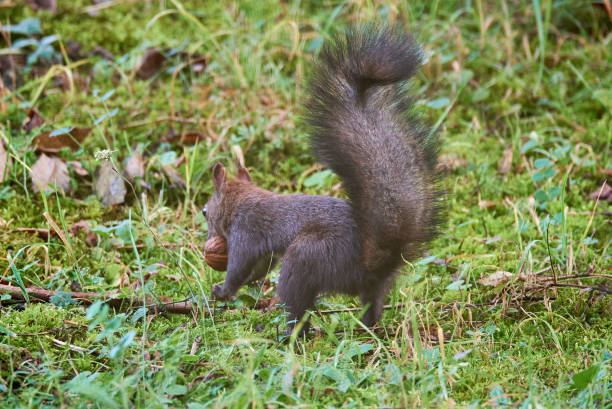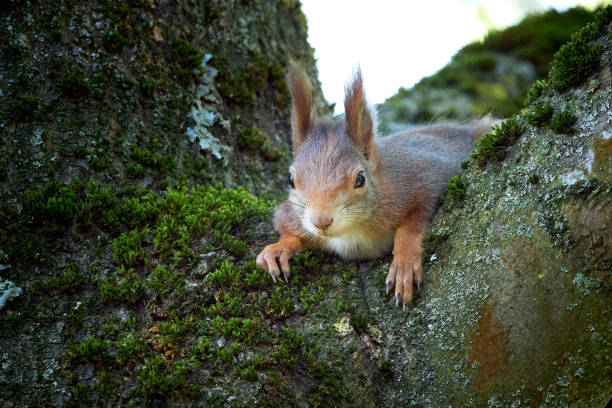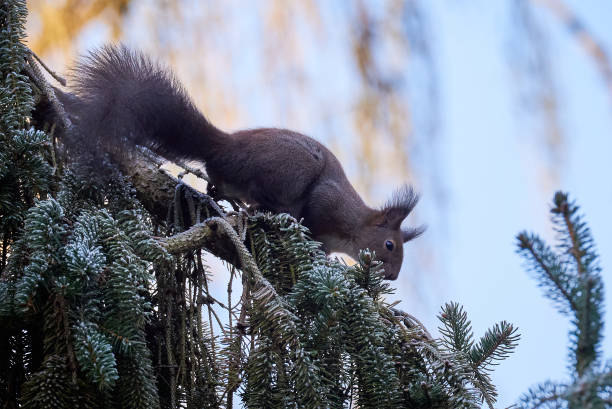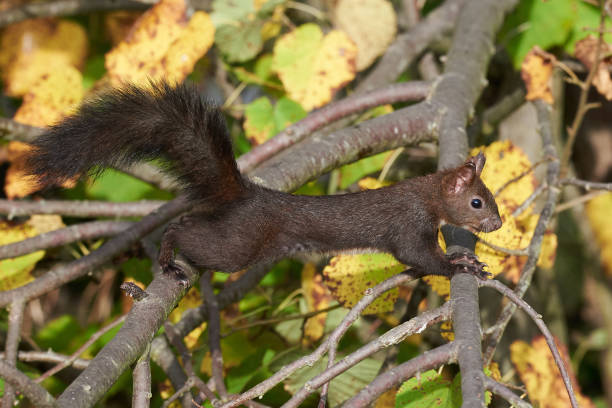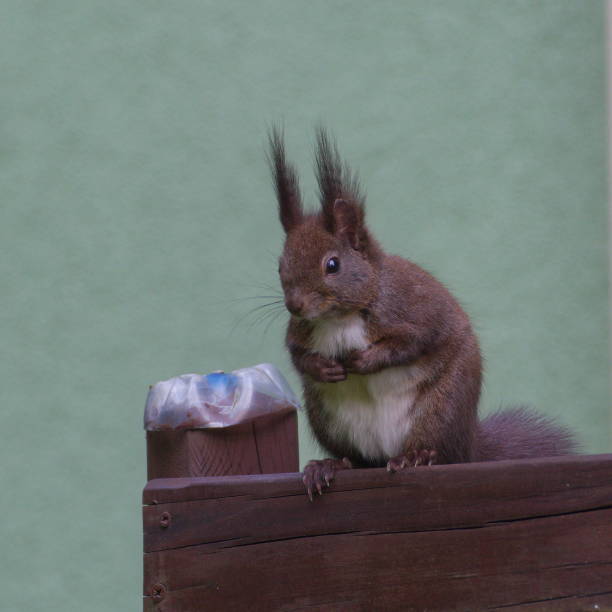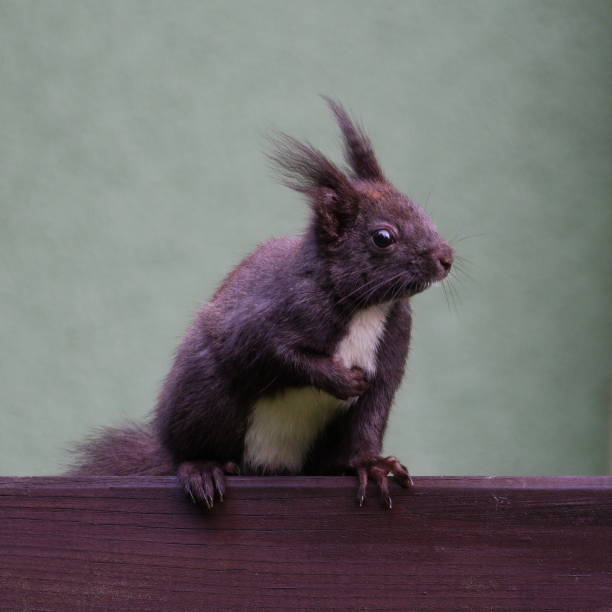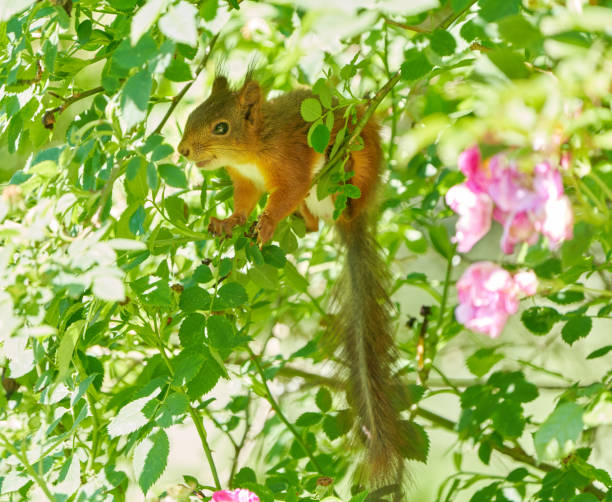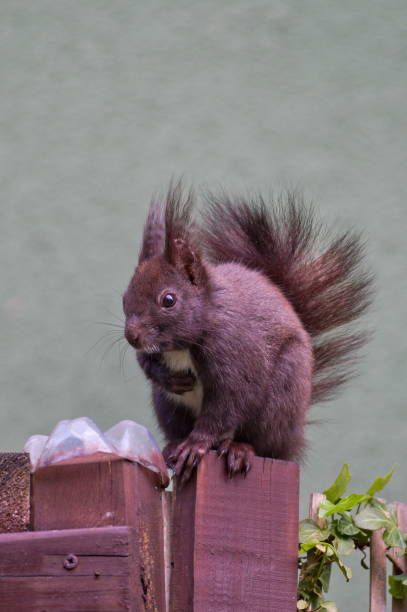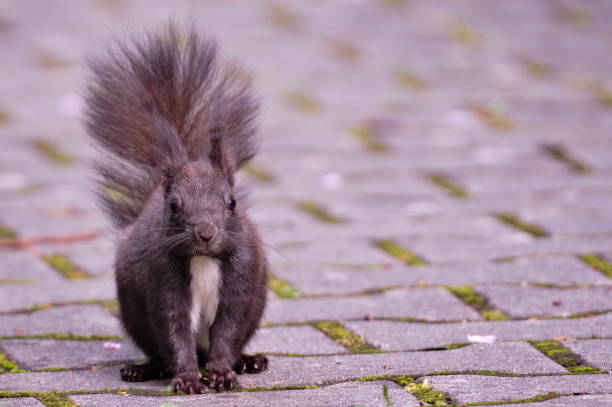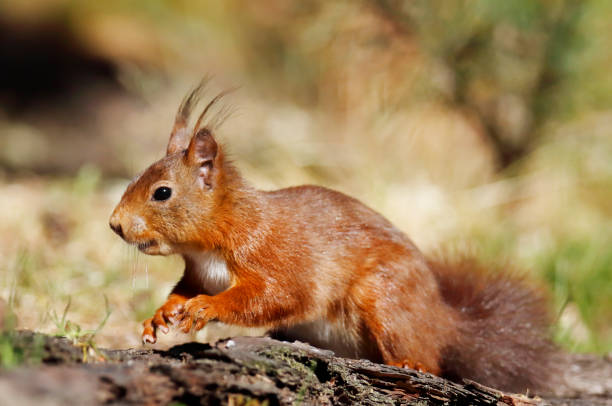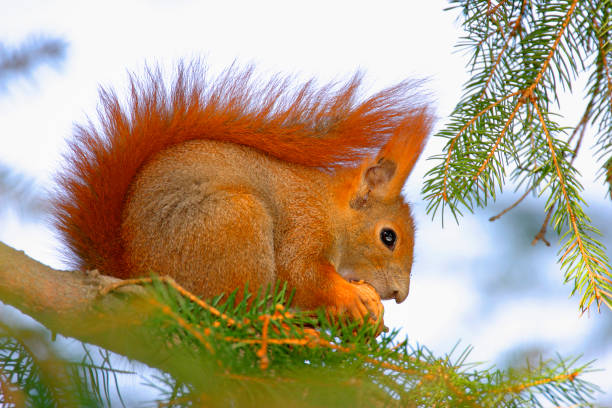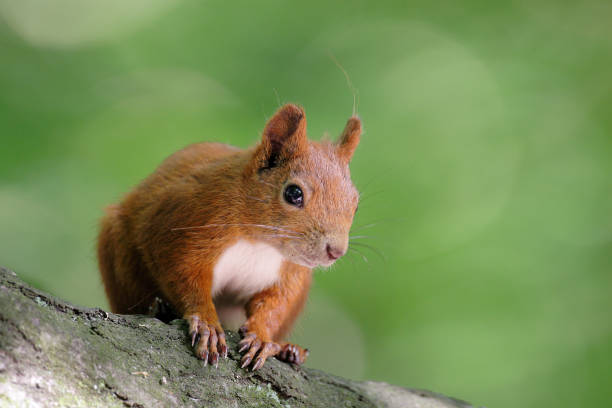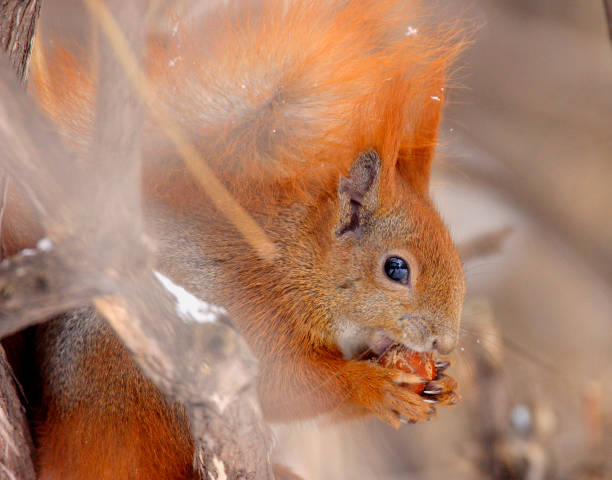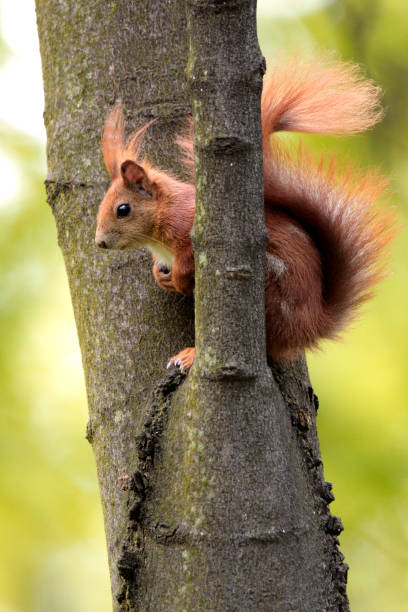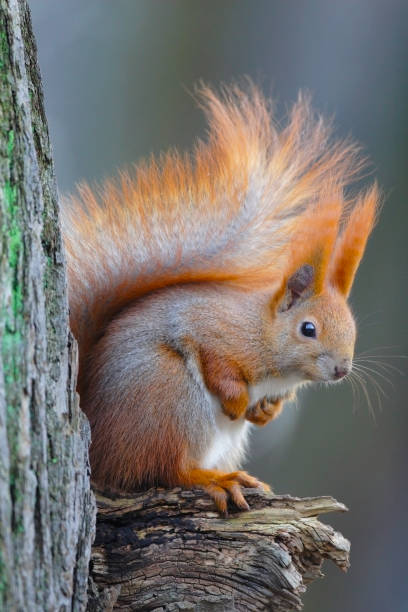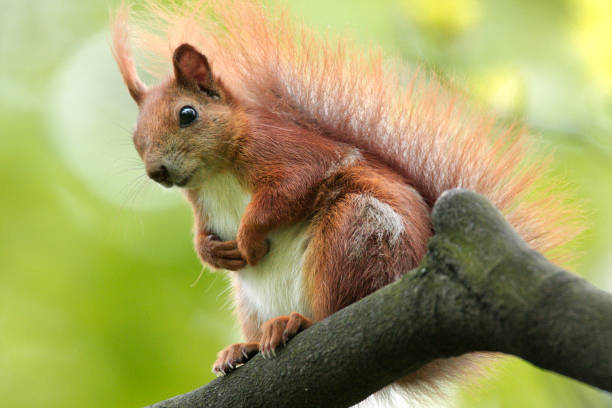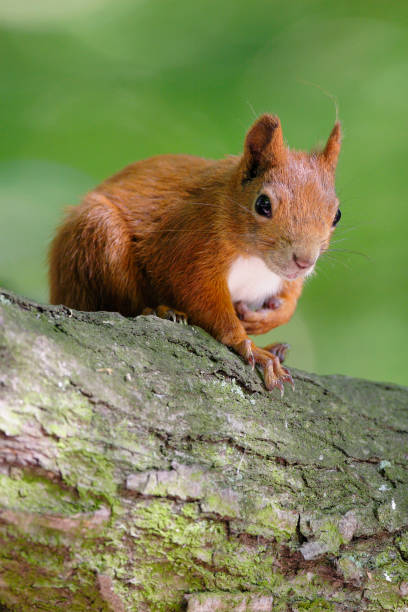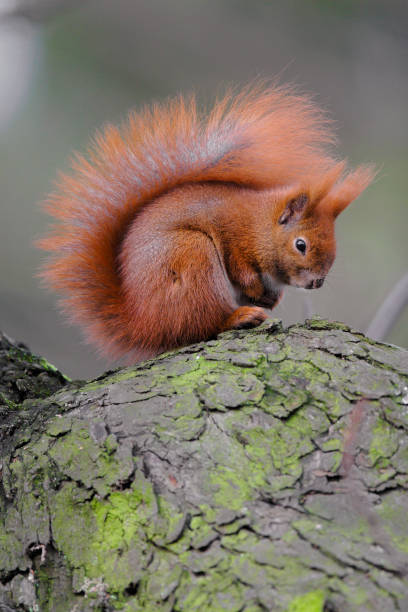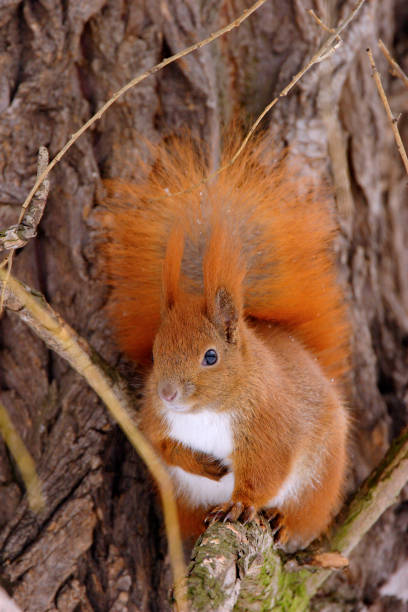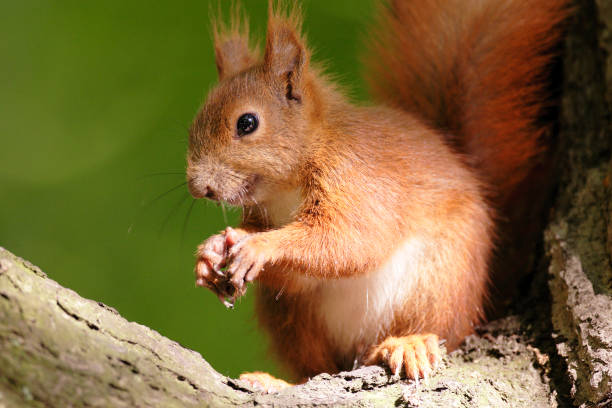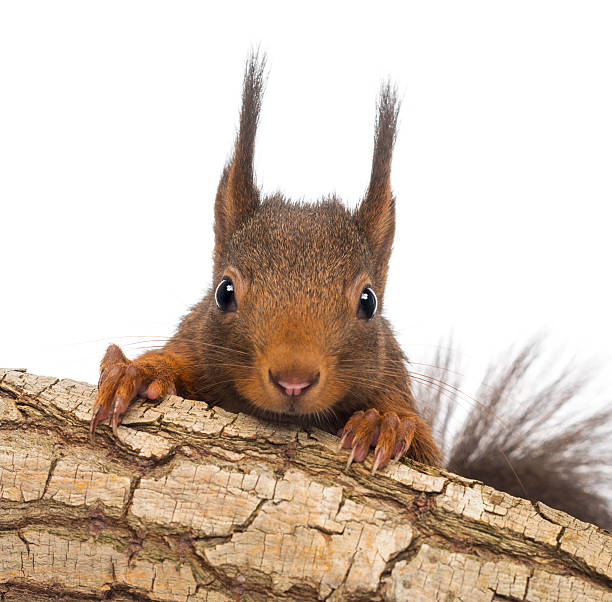
Hiding Eurasian Red Squirrel (Sciurus Vulgaris) Pictures, Images and Stock Photos
Browse 180+ hiding eurasian red squirrel (sciurus vulgaris) stock photos and images available, or start a new search to explore more stock photos and images.

Close-up of a Red squirrel or Eurasian red squirrel, Sciurus vulgaris, hiding behind a branch, isolated on white
Red squirrel on a tree, looking around
A red squirrel peeks out from behind a tree.
The red squirrel or Eurasian red squirrel (Sciurus vulgaris) is a species of tree squirrel in the genus Sciurus common throughout Eurasia. The red squirrel is an arboreal, primarily herbivorous rodent. In Great Britain, Ireland, and in Italy numbers have decreased drastically in recent years. This decline is associated with the introduction by humans of the eastern grey squirrel (Sciurus carolinensis) from North America. However, the population in Scotland is stabilising due to conservation efforts, awareness and the increasing population of the pine marten, a European predator that selectively controls grey squirrels. Distribution: Red squirrels occupy boreal, coniferous woods in northern Europe and Siberia, preferring Scots pine, Norway spruce and Siberian pine. In western and southern Europe they are found in broad-leaved woods where the mixture of tree and shrub species provides a better year round source of food. In most of the British Isles and in Italy, broad-leaved woodlands are now less suitable due to the better competitive feeding strategy of introduced grey squirrels (source Wikipedia). In the Netherlands this Species is quite common in Forests and Parks.
Single Red Squirrel on a tree branch in Poland forest during a spring period
A wild red squirrel is perched on a log carefully looking around for a meal in the wild
Red squirrel eating hidden in a tree. Sciurus vulgaris.
The red squirrel or Eurasian red squirrel (Sciurus vulgaris) is a species of tree squirrel in the genus Sciurus common throughout Eurasia. The red squirrel is an arboreal, primarily herbivorous rodent. In Great Britain, Ireland, and in Italy numbers have decreased drastically in recent years. This decline is associated with the introduction by humans of the eastern grey squirrel (Sciurus carolinensis) from North America. However, the population in Scotland is stabilising due to conservation efforts, awareness and the increasing population of the pine marten, a European predator that selectively controls grey squirrels. Distribution: Red squirrels occupy boreal, coniferous woods in northern Europe and Siberia, preferring Scots pine, Norway spruce and Siberian pine. In western and southern Europe they are found in broad-leaved woods where the mixture of tree and shrub species provides a better year round source of food. In most of the British Isles and in Italy, broad-leaved woodlands are now less suitable due to the better competitive feeding strategy of introduced grey squirrels (source Wikipedia). In the Netherlands this Species is quite common.
Red Squirrel under trees in Copenhagen Botanical gardens.
The red squirrel or Eurasian red squirrel (Sciurus vulgaris) is a species of tree squirrel in the genus Sciurus common throughout Eurasia. The red squirrel is an arboreal, primarily herbivorous rodent. In Great Britain, Ireland, and in Italy numbers have decreased drastically in recent years. This decline is associated with the introduction by humans of the eastern grey squirrel (Sciurus carolinensis) from North America. However, the population in Scotland is stabilising due to conservation efforts, awareness and the increasing population of the pine marten, a European predator that selectively controls grey squirrels. Distribution: Red squirrels occupy boreal, coniferous woods in northern Europe and Siberia, preferring Scots pine, Norway spruce and Siberian pine. In western and southern Europe they are found in broad-leaved woods where the mixture of tree and shrub species provides a better year round source of food. In most of the British Isles and in Italy, broad-leaved woodlands are now less suitable due to the better competitive feeding strategy of introduced grey squirrels (source Wikipedia). In the Netherlands this Species is quite common in Forests and Parks.
Red squirrel on a birch trunk, wildlife world, wild animals, flora and fauna
Single Red Squirrel on a tree branch over Biebrza river wetlands in Poland forest during a winter period
Single Red Squirrel on a tree branch over Biebrza river wetlands in Poland during a spring period
Single Red Squirrel on a tree branch in Poland forest during a spring period
Single Red Squirrel on a tree branch over the Biebrza river wetlands in Poland during a spring season
Single Red Squirrel on a tree branch in Poland forest during a spring period
Single Red Squirrel on a tree branch over the Biebrza river wetlands in Poland during a spring season
The red squirrel or Eurasian red squirrel (Sciurus vulgaris) is a species of tree squirrel in the genus Sciurus common throughout Eurasia. The red squirrel is an arboreal, primarily herbivorous rodent. In Great Britain, Ireland, and in Italy numbers have decreased drastically in recent years. This decline is associated with the introduction by humans of the eastern grey squirrel (Sciurus carolinensis) from North America. However, the population in Scotland is stabilising due to conservation efforts, awareness and the increasing population of the pine marten, a European predator that selectively controls grey squirrels. Distribution: Red squirrels occupy boreal, coniferous woods in northern Europe and Siberia, preferring Scots pine, Norway spruce and Siberian pine. In western and southern Europe they are found in broad-leaved woods where the mixture of tree and shrub species provides a better year round source of food. In most of the British Isles and in Italy, broad-leaved woodlands are now less suitable due to the better competitive feeding strategy of introduced grey squirrels (source Wikipedia). In the Netherlands this Species is quite common in Forests and Parks.
The red squirrel or Eurasian red squirrel (Sciurus vulgaris) is a species of tree squirrel in the genus Sciurus common throughout Eurasia. The red squirrel is an arboreal, primarily herbivorous rodent. In Great Britain, Ireland, and in Italy numbers have decreased drastically in recent years. This decline is associated with the introduction by humans of the eastern grey squirrel (Sciurus carolinensis) from North America. However, the population in Scotland is stabilising due to conservation efforts, awareness and the increasing population of the pine marten, a European predator that selectively controls grey squirrels. Distribution: Red squirrels occupy boreal, coniferous woods in northern Europe and Siberia, preferring Scots pine, Norway spruce and Siberian pine. In western and southern Europe they are found in broad-leaved woods where the mixture of tree and shrub species provides a better year round source of food. In most of the British Isles and in Italy, broad-leaved woodlands are now less suitable due to the better competitive feeding strategy of introduced grey squirrels (source Wikipedia). In the Netherlands this Species is quite common in Forests and Parks.
The red squirrel or Eurasian red squirrel (Sciurus vulgaris) is a species of tree squirrel in the genus Sciurus common throughout Eurasia. The red squirrel is an arboreal, primarily herbivorous rodent. In Great Britain, Ireland, and in Italy numbers have decreased drastically in recent years. This decline is associated with the introduction by humans of the eastern grey squirrel (Sciurus carolinensis) from North America. However, the population in Scotland is stabilising due to conservation efforts, awareness and the increasing population of the pine marten, a European predator that selectively controls grey squirrels. Distribution: Red squirrels occupy boreal, coniferous woods in northern Europe and Siberia, preferring Scots pine, Norway spruce and Siberian pine. In western and southern Europe they are found in broad-leaved woods where the mixture of tree and shrub species provides a better year round source of food. In most of the British Isles and in Italy, broad-leaved woodlands are now less suitable due to the better competitive feeding strategy of introduced grey squirrels (source Wikipedia). In the Netherlands this Species is quite common in Forests and Parks.
Red squirrel on the snow in the park. Small animals surviving in the wintertime
Red squirrel hiding food in the dry oak leaves in the winter park
The red squirrel or Eurasian red squirrel (Sciurus vulgaris) is a species of tree squirrel in the genus Sciurus common throughout Eurasia. The red squirrel is an arboreal, primarily herbivorous rodent. In Great Britain, Ireland, and in Italy numbers have decreased drastically in recent years. This decline is associated with the introduction by humans of the eastern grey squirrel (Sciurus carolinensis) from North America. However, the population in Scotland is stabilising due to conservation efforts, awareness and the increasing population of the pine marten, a European predator that selectively controls grey squirrels. Distribution: Red squirrels occupy boreal, coniferous woods in northern Europe and Siberia, preferring Scots pine, Norway spruce and Siberian pine. In western and southern Europe they are found in broad-leaved woods where the mixture of tree and shrub species provides a better year round source of food. In most of the British Isles and in Italy, broad-leaved woodlands are now less suitable due to the better competitive feeding strategy of introduced grey squirrels (source Wikipedia). In the Netherlands this Species is quite common in Forests and Parks.
The red squirrel or Eurasian red squirrel (Sciurus vulgaris) is a species of tree squirrel in the genus Sciurus common throughout Eurasia. The red squirrel is an arboreal, primarily herbivorous rodent. In Great Britain, Ireland, and in Italy numbers have decreased drastically in recent years. This decline is associated with the introduction by humans of the eastern grey squirrel (Sciurus carolinensis) from North America. However, the population in Scotland is stabilising due to conservation efforts, awareness and the increasing population of the pine marten, a European predator that selectively controls grey squirrels. Distribution: Red squirrels occupy boreal, coniferous woods in northern Europe and Siberia, preferring Scots pine, Norway spruce and Siberian pine. In western and southern Europe they are found in broad-leaved woods where the mixture of tree and shrub species provides a better year round source of food. In most of the British Isles and in Italy, broad-leaved woodlands are now less suitable due to the better competitive feeding strategy of introduced grey squirrels (source Wikipedia). In the Netherlands this Species is quite common in Forests and Parks.
The red squirrel or Eurasian red squirrel (Sciurus vulgaris) is a species of tree squirrel in the genus Sciurus common throughout Eurasia. The red squirrel is an arboreal, primarily herbivorous rodent. In Great Britain, Ireland, and in Italy numbers have decreased drastically in recent years. This decline is associated with the introduction by humans of the eastern grey squirrel (Sciurus carolinensis) from North America. However, the population in Scotland is stabilising due to conservation efforts, awareness and the increasing population of the pine marten, a European predator that selectively controls grey squirrels. Distribution: Red squirrels occupy boreal, coniferous woods in northern Europe and Siberia, preferring Scots pine, Norway spruce and Siberian pine. In western and southern Europe they are found in broad-leaved woods where the mixture of tree and shrub species provides a better year round source of food. In most of the British Isles and in Italy, broad-leaved woodlands are now less suitable due to the better competitive feeding strategy of introduced grey squirrels (source Wikipedia). In the Netherlands this Species is quite common in Forests and Parks.
Eurasian red squirrel eating walnut (Sciurus vulgaris)
Eurasian red squirrel with a walnut in his mouth (Sciurus vulgaris)
Eurasian red squirrel closeup (Sciurus vulgaris)
Eurasian red squirrel closeup (Sciurus vulgaris)
Red squirrel on a birch trunk, wildlife world, wild animals, flora and fauna
Close-up of a Eurasian red squirrel hiding in a tree and looking through leaves
The red squirrel or Eurasian red squirrel (Sciurus vulgaris) is a species of tree squirrel in the genus Sciurus common throughout Eurasia. The red squirrel is an arboreal, primarily herbivorous rodent. In Great Britain, Ireland, and in Italy numbers have decreased drastically in recent years. This decline is associated with the introduction by humans of the eastern grey squirrel (Sciurus carolinensis) from North America. However, the population in Scotland is stabilising due to conservation efforts, awareness and the increasing population of the pine marten, a European predator that selectively controls grey squirrels. Distribution: Red squirrels occupy boreal, coniferous woods in northern Europe and Siberia, preferring Scots pine, Norway spruce and Siberian pine. In western and southern Europe they are found in broad-leaved woods where the mixture of tree and shrub species provides a better year round source of food. In most of the British Isles and in Italy, broad-leaved woodlands are now less suitable due to the better competitive feeding strategy of introduced grey squirrels (source Wikipedia). In the Netherlands this Species is quite common in Forests and Parks.
Eurasian red squirrel closeup (Sciurus vulgaris)
Eurasian red squirrel closeup (Sciurus vulgaris)
Eurasian red squirrel closeup (Sciurus vulgaris)
Eurasian red squirrel eating walnut (Sciurus vulgaris)
Eurasian red squirrel hiding a walnut (Sciurus vulgaris)
Eurasian red squirrel closeup (Sciurus vulgaris)
Eurasian red squirrel in the frosty morning (Sciurus vulgaris)
Eurasian red squirrel closeup (Sciurus vulgaris)
Nature of Czech republic.
Nature of Czech republic.
Red squirrel baby hiding in a rose bush.
Nature of Czech republic.
Nature of Czech republic.
The red squirrel or Eurasian red squirrel (Sciurus vulgaris) is a species of tree squirrel in the genus Sciurus common throughout Eurasia. The red squirrel is an arboreal, primarily herbivorous rodent. In Great Britain, Ireland, and in Italy numbers have decreased drastically in recent years. This decline is associated with the introduction by humans of the eastern grey squirrel (Sciurus carolinensis) from North America. However, the population in Scotland is stabilising due to conservation efforts, awareness and the increasing population of the pine marten, a European predator that selectively controls grey squirrels. Distribution: Red squirrels occupy boreal, coniferous woods in northern Europe and Siberia, preferring Scots pine, Norway spruce and Siberian pine. In western and southern Europe they are found in broad-leaved woods where the mixture of tree and shrub species provides a better year round source of food. In most of the British Isles and in Italy, broad-leaved woodlands are now less suitable due to the better competitive feeding strategy of introduced grey squirrels (source Wikipedia). In the Netherlands this Species is quite common.
Single Red Squirrel on a tree branch in Poland forest during a spring period
Single Red Squirrel on a tree branch in Poland forest during a spring period
Single Red Squirrel on a tree branch in Poland forest during a winter period
Single Red Squirrel on a tree branch over the Biebrza river wetlands in Poland during a spring season
Single Red Squirrel on a tree branch in Poland forest during a spring period
Single Red Squirrel on a tree branch over the Biebrza river wetlands in Poland during a spring season
Single Red Squirrel on a tree branch in Poland forest during a spring period
Single Red Squirrel on a tree branch in Poland forest during a spring period
Single Red Squirrel on a tree branch over Biebrza river wetlands in Poland forest during a winter period
Single Red Squirrel on a tree branch in Poland forest during a spring period
